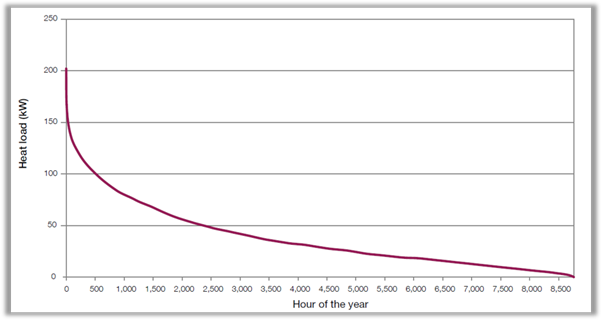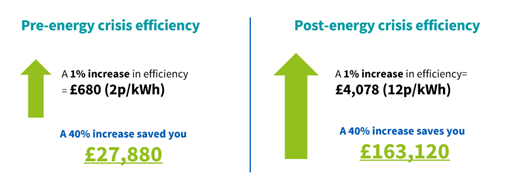This blog will explore why building owners with heat networks need to have a proactive data-driven maintenance regime in place to improve operation and efficiency, particularly at a time when residents and operators face eye-wateringly high gas prices.
Heat networks are relatively unpopular in the UK at present and as a result, there is a lack of understanding and knowledge around the design, build, operation, and maintenance of the systems. Poorly performing heat networks are commonplace in the UK, however under the Governments Net Zero Strategy: Build Back Greener comes the growth of the heat network industry to meet Net Zero targets, meaning that building owners with heat networks must start to understand why heat networks require specialist knowledge, to ensure optimum performance.
Why do heat networks need to be operated and maintained differently to conventional heating systems?
Unlike the conventional heating systems we are used to in the UK, where each property has its own individual gas boiler providing heat and hot water on demand, communal heating systems have one central plant room which houses plant equipment such as gas boilers or heat pumps. From there, heat is distributed around the network to individual properties on a continuous basis.
In the case of conventional heating systems, operators and residents do not need to worry about the efficiency of the system as it is only in use when required. However, the continuous operation of a heat network means that the efficiency of the system is paramount to reducing gas consumption, reducing losses, and therefore reducing costs for both operators and residents and cutting carbon emissions. You can read more about heat network efficiency and what it means here.
The below demand duration curve illustrates the demand on a communal heating system throughout the year, highlighting its constant use.

Source: CIBSE CP1
How should heat networks be operated and maintained for maximum efficiency?
In our experience, the operation and maintenance of heat networks has often been considered as a low priority. At present, heat networks account for a small proportion of heating solutions and therefore the operation and maintenance of those networks is carried out by a generalist contractor. In addition, the operation and maintenance of the heat network has often been divided out into separate contractors, for example X company would handle operating and maintaining the energy centre and Y company would be responsible for property and domestic maintenance. This piecemeal approach means that operators do not have complete visibility of the entire performance of the heat network and therefore cannot effectively target specific issues on the network.
During the current energy crisis, the spiralling cost of gas has meant that many have faced huge increases in their input cost of gas, sometimes ten-fold. This then has a knock-on effect as organisations are unable to subsidise such huge increases and must pass this cost on to the resident via the tariff. The solution to this is to improve the efficiency of the heat network through data-driven, targeted operation and maintenance and for this, operators must have a long-term strategy in place to effectively manage the heat network and make continuous improvements.
The below illustrates the cost benefit of improving the efficiency of a scheme pre and post energy crisis:

What is data-driven operation and maintenance on heat networks and why is it important?
Data-driven maintenance refers to the ability to take real-time data, such as volume to energy ratio from your scheme via property heat meters and use this to make targeted interventions on problematic areas, to improve network efficiency. Without data-driven maintenance, heat network operators have no visibility over the schemes’ performance and have no way of identifying where there are issues.
Without this knowledge, heat network operators have no means to make targeted interventions, meaning any investment in additional maintenance or capital works is unlikely to reap the desired reward. This data-driven approach, however, must be managed by one specialist contractor to ensure that the data from across the entire network is collected and analysed. With the piecemeal approach we often see, the improvements which can be made through operation and maintenance are limited.
How can I start to implement data-driven operation and maintenance on a heat network?
- Start by considering your current scheme operation and efficiency. Our Heat Network Efficiency Savings Calculator can help you to do this.
- Understand what data you currently have available to you
- Analyse this data to understand where there are inefficiencies on your scheme
- Employ a specialist operation and maintenance contractor who can manage your entire heat network and can analyse the data for you and implement the targeted interventions
Remember, without the data it is incredibly difficult to make targeted improvements to your heat network and improve efficiency.
For more information, or to speak to one of our team about the operation and maintenance of your heat network, please complete the form below and one of our team will be in touch shortly.


